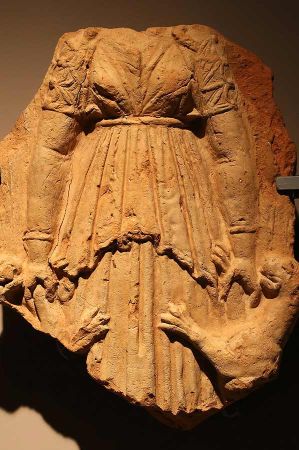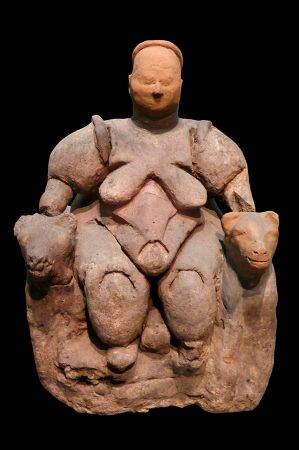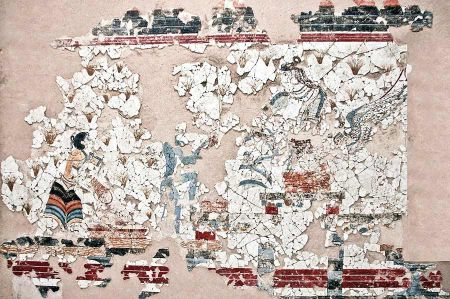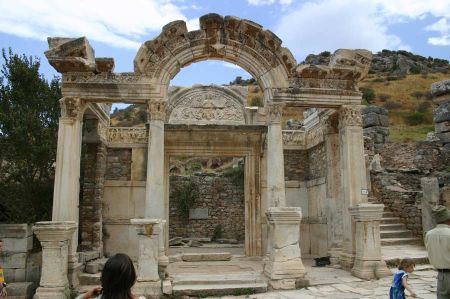Potnia Theron - the controller of the wild
- Written by Portal Editor
In ancient times, Potnia Theron - the ruler of the wild, was considered a female deity who, as the mistress of wild animals, was responsible for protecting them.
This goddess, whom Homer equates with the goddess Artemis, also appeared for mythical creatures and hermaphrodite figures, as is reported for the first time in the 21st book of the Iliad, verse 470.
In the Temple of Artemis in Ephesus
During this year's excavation campaign, researchers and archaeologists from Austria discovered the spectacular find in the Temple of Artemis in Ephesus in the form of a fragment of this rare statuette of the "ruler of the wild". There had been no digging at the Temple of Artemis for almost 20 years, although there were still a number of unanswered questions. The head of the Ephesus excavation and simultaneous director of the ÖAI, Sabine Ladstätter, explained it as follows: "We wanted to pursue further investigations using modern methods in an interdisciplinary manner. This gives us an idea of how the people of the seventh and sixth centuries BC imagined the Ephesians Artemis introduced."
In a layer in the Temple of Artemis, which was dug up during the construction of the first large marble temple, the so-called Kroisos Temple, in the 6th century BC, the tiny sculpture in the form of the torso and head of a female figure came to light. The figure, which is only 3.6 centimetres tall and depicts the Lady of the Animals, is also a spectacular find because the statuette was carved from the tooth of a hippopotamus, a material that was very rare in Greek sanctuaries.
The world-famous cult image of Artemis
 The sculpture shows characteristics of the "Daedalian style", which spread from the island of Crete to the coast of what is now western Turkey in the middle of the seventh century. As was common at the time, the figure has two sides and had wings, which characterizes the fragment as the divine being "Potnia Theron". As finds from other excavation sites show, the figure probably carried a wild animal in each hand, which was intended to express its power over nature.
The sculpture shows characteristics of the "Daedalian style", which spread from the island of Crete to the coast of what is now western Turkey in the middle of the seventh century. As was common at the time, the figure has two sides and had wings, which characterizes the fragment as the divine being "Potnia Theron". As finds from other excavation sites show, the figure probably carried a wild animal in each hand, which was intended to express its power over nature.
The find can also be classified as remarkable because it would be the first discovery of a Potnia Theron figure from the Artemis sanctuary, Ms. Ladstätter continued her explanations: "We don't know how the goddess was before the second century BC looked like." The world-famous cult image of Artemis as a multi-breasted sculpture dates back to the Hellenistic period in the city of Ephesus. With this small piece, an important, very well-fitting detail was found in the mystery surrounding the appearance of the early form of the goddess of wild animals.
Fresco from the Bronze Age Akrotiri on Santorini
 In ancient times, the later Artemis Temple was one of the Seven Wonders of the World. As already mentioned, Potnia Theron was equated with the goddess Artemis in Greek mythology, with the goddess Diana in Roman mythology and with Artumes in Etruscan mythology.
In ancient times, the later Artemis Temple was one of the Seven Wonders of the World. As already mentioned, Potnia Theron was equated with the goddess Artemis in Greek mythology, with the goddess Diana in Roman mythology and with Artumes in Etruscan mythology.
A male equivalent is the Lord of Beasts, which appears in both Minoan culture and other cultures and is also identified with the Horned God.
Archaeologists, cultural and religious scientists transferred the term "Potnia Theron" to a goddess from the Minoan culture (around 2000 BC to around 1400 BC). Necklaces and tiaras with images of the Potnia Theron and sea polyps were found in Kato Zakros from the New Palace period (1700 to 1450 BC).
 The only surviving mural depicting Potnia Theron is a fresco from the Bronze Age Akrotiri on Santorini, in which the goddess is accompanied by a monkey and a griffin. Further transfers took place to other goddesses who were depicted together with animals and thus showed power over them.
The only surviving mural depicting Potnia Theron is a fresco from the Bronze Age Akrotiri on Santorini, in which the goddess is accompanied by a monkey and a griffin. Further transfers took place to other goddesses who were depicted together with animals and thus showed power over them.
Please read as well:
